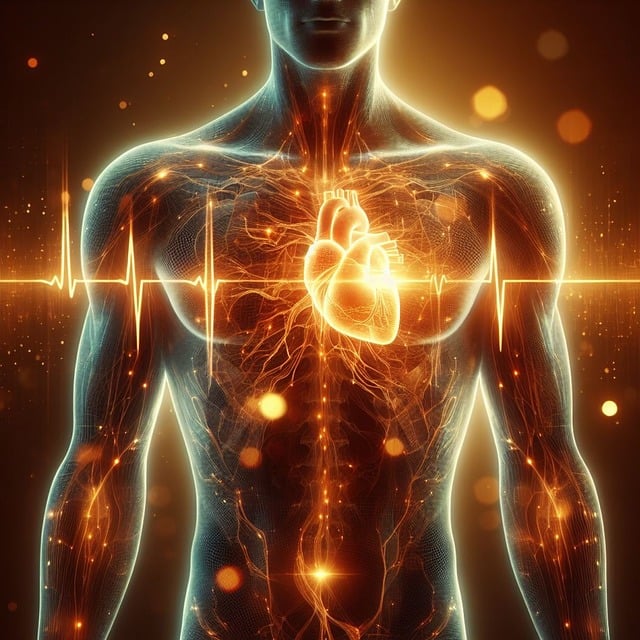Group programs fill a critical gap in today's fast-paced world by offering emotional support and a sense of belonging through shared experiences and collective wisdom. These programs incorporate interactive discussions, relaxation techniques like guided meditation and yoga, and collaborative activities to build bonds, learn from one another, and gain resilience. Effective relaxation techniques, made accessible and adaptable, strengthen community connections and improve individual emotional well-being. Open dialogue in safe, supportive environments fosters deeper connections, while evaluation metrics demonstrate improved mental health outcomes.
In today’s fast-paced world, group programs offer a lifeline for individuals seeking connection and emotional support. This article delves into the transformative power of community building through structured initiatives designed to enhance well-being. We explore key components such as powerful group dynamics, effective relaxation techniques tailored for emotional healing, fostering open dialogue in safe spaces, and measuring the profound impact on mental health. By examining these aspects, we uncover how group programs can revolutionize support networks.
- The Power of Group Connection: Building a Supportive Community
- Designing Effective Relaxation Techniques for Emotional Well-being
- Facilitating Open Dialogue: Creating Safe Spaces for Sharing
- Measuring Success: Evaluating the Impact of Group Programs on Mental Health
The Power of Group Connection: Building a Supportive Community

In today’s fast-paced world, finding a sense of belonging and emotional support can be challenging. Group programs step into this gap by creating spaces where individuals connect on deeper levels, fostering a supportive community that enhances well-being. These programs recognize the power of shared experiences and collective wisdom, enabling participants to navigate life’s challenges with newfound resilience.
Through interactive discussions, relaxation techniques, and collaborative activities, group members build strong bonds and learn from one another. This sense of connection not only provides immediate emotional relief but also empowers individuals to face future stressors. By combining the comfort of shared struggles with practical relaxation methods, these programs create a sanctuary where vulnerability is celebrated, and healing begins.
Designing Effective Relaxation Techniques for Emotional Well-being

Designing effective relaxation techniques is a cornerstone of any group program focused on fostering connection and emotional support. These techniques play a vital role in helping individuals manage stress, promote mindfulness, and enhance overall emotional well-being. Group leaders should incorporate a variety of methods that cater to different preferences and needs. For instance, guided meditation, deep breathing exercises, and progressive muscle relaxation are proven to reduce anxiety and foster a sense of calm. Additionally, creative outlets like yoga, art therapy, or even simple walks in nature can serve as powerful tools for emotional expression and connection.
The key to successful relaxation techniques lies in their accessibility and adaptability. It’s essential to teach participants how to integrate these practices into their daily routines, regardless of their initial comfort level. Regularly incorporating relaxation techniques into group sessions not only improves individual emotional resilience but also strengthens the sense of community among members. By creating a safe and supportive environment where everyone feels encouraged to explore and share their experiences, these programs can truly revolutionize the way participants cope with life’s challenges.
Facilitating Open Dialogue: Creating Safe Spaces for Sharing

In group programs designed to foster connection and emotional support, facilitating open dialogue is a cornerstone of success. Creating safe spaces where individuals feel comfortable sharing their thoughts, feelings, and experiences is paramount. This starts with establishing ground rules that emphasize non-judgment, active listening, and respect for confidentiality. By fostering an environment free from criticism or ridicule, participants are more likely to engage openly, leading to deeper connections and a sense of belonging.
These safe spaces encourage the use of relaxation techniques as a precursor to sharing. Mindfulness exercises, deep breathing, and guided imagery can help individuals calm their minds and bodies, making it easier to express themselves vulnerably. Such practices not only promote emotional well-being but also strengthen the bond among group members, creating a supportive network where everyone feels heard and understood.
Measuring Success: Evaluating the Impact of Group Programs on Mental Health

Evaluating the success of group programs in fostering connection and emotional support is crucial, as it helps ensure their effectiveness in enhancing mental health. This process involves assessing both qualitative and quantitative aspects to gain a comprehensive understanding of participants’ experiences and outcomes. One key metric is the reduction in symptoms of anxiety and depression, often measured through standardized questionnaires before and after the program. A significant decrease in these scores indicates successful interventions aimed at improving mental well-being.
Furthermore, qualitative assessments through participant feedback and interviews provide valuable insights into the impact of group programs. Feedback highlights improvements in social connectedness, increased feelings of belonging, and enhanced coping strategies such as relaxation techniques. These evaluations collectively contribute to understanding how group programs create supportive environments that positively influence individuals’ mental health and overall resilience.
Group programs that foster connection and emotional support have proven to be powerful tools in enhancing mental health. By combining the power of community with effective relaxation techniques, these programs create safe spaces for individuals to share and connect on a deeper level. Through open dialogue and structured activities, participants experience a sense of belonging and build resilience. Measuring success through evaluation ensures these initiatives are making a tangible impact, offering hope and improved well-being to those seeking support. Incorporating relaxation techniques into group settings can revolutionize how we approach emotional health, creating lasting positive changes in individuals’ lives.
